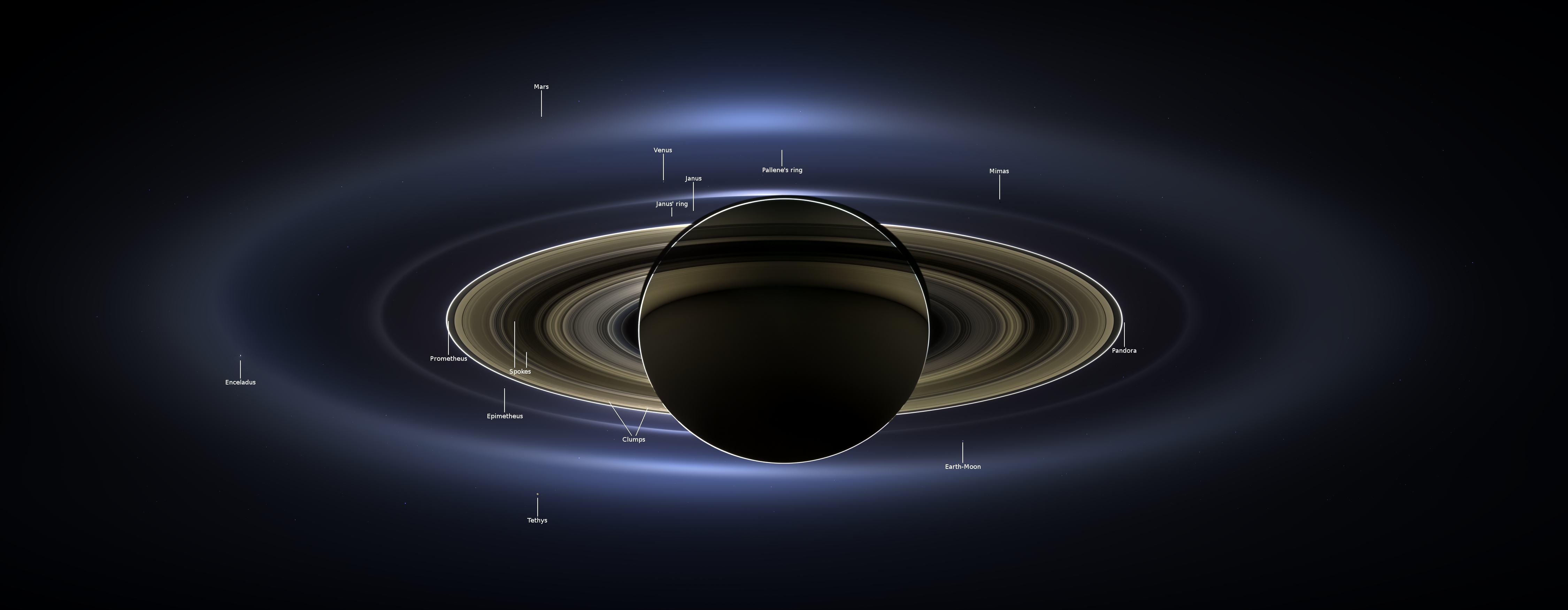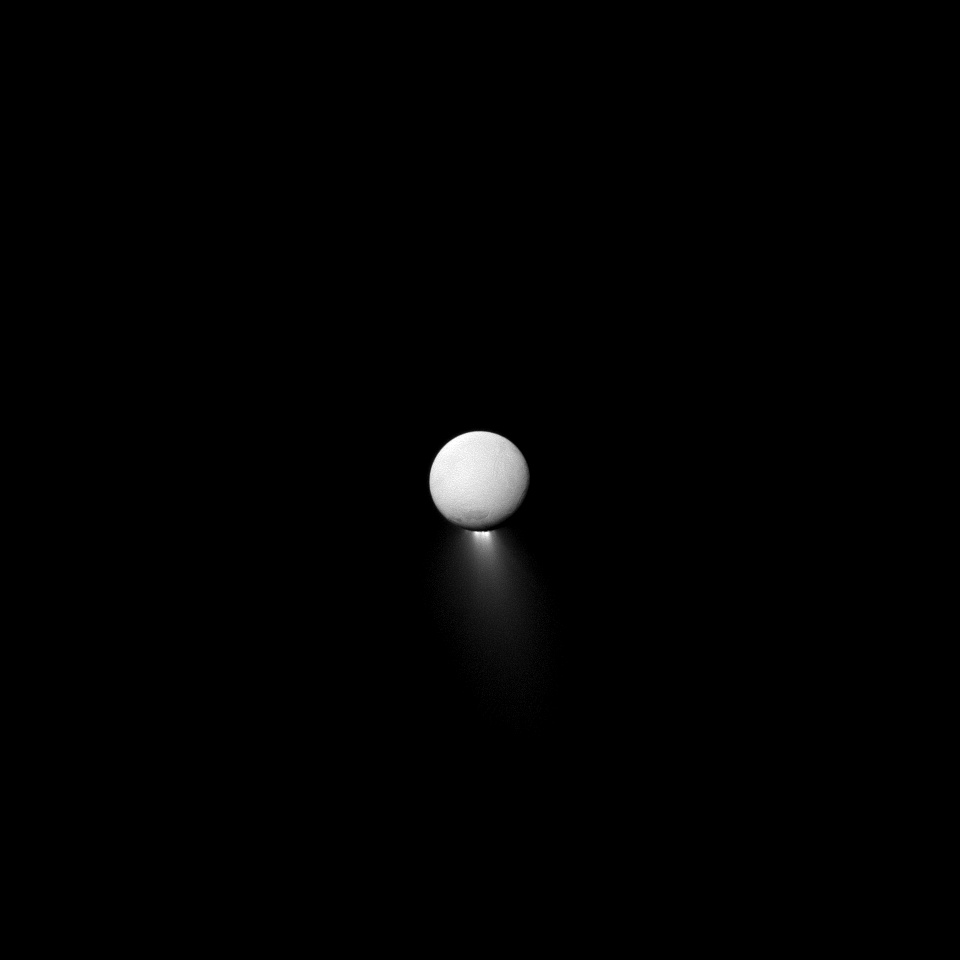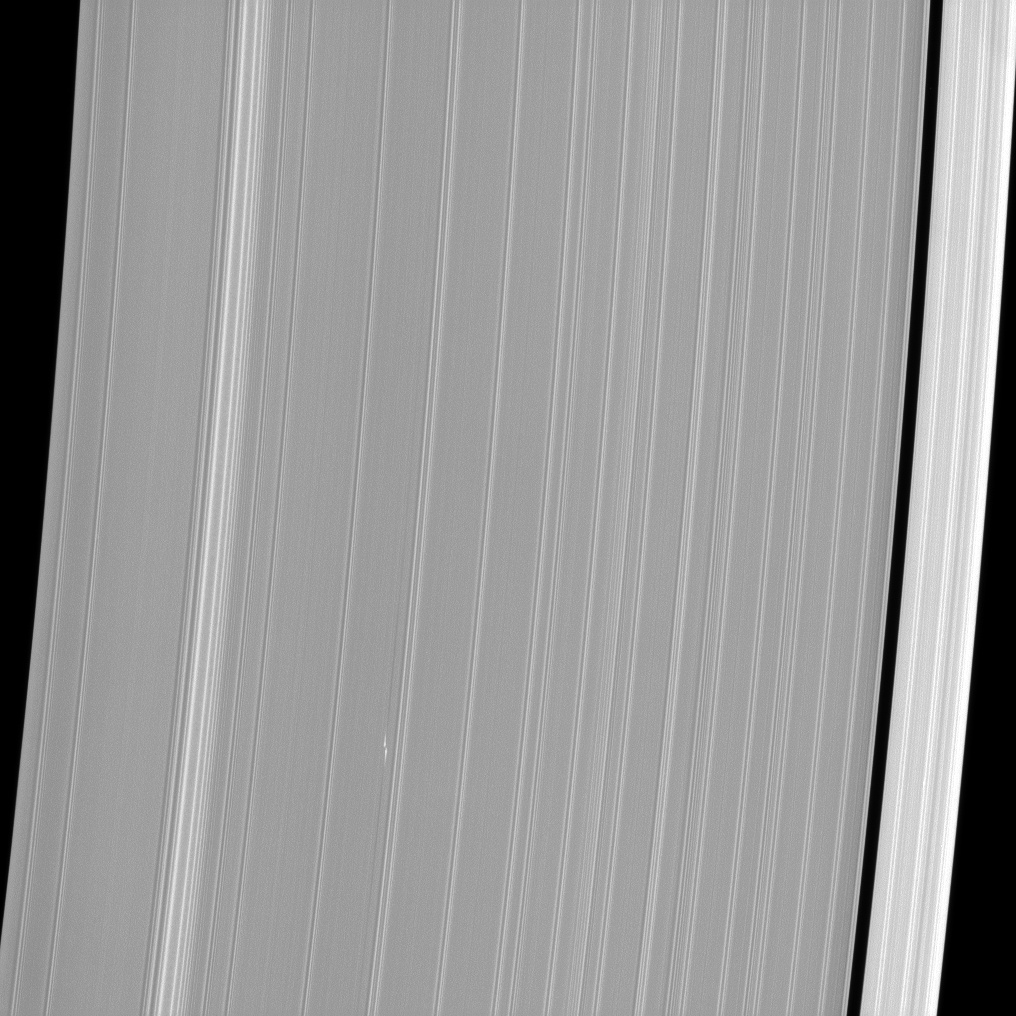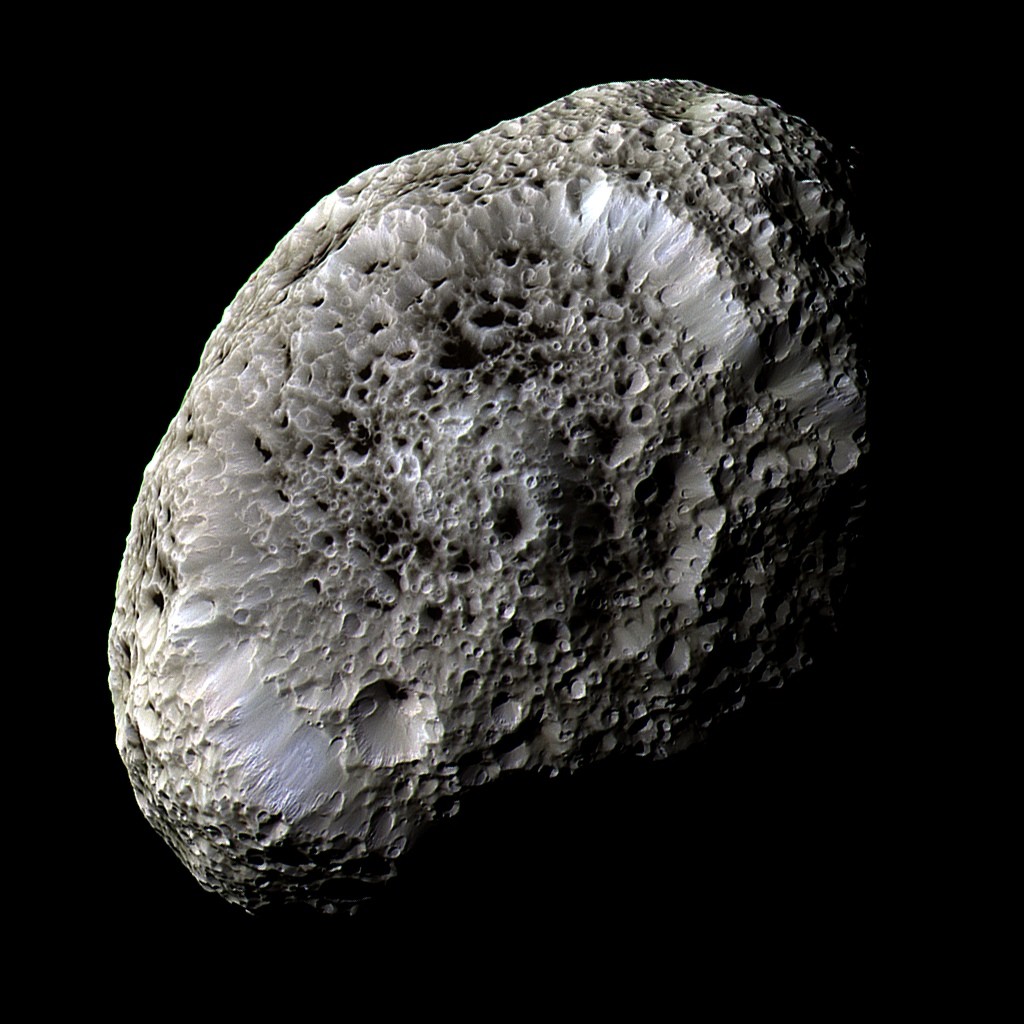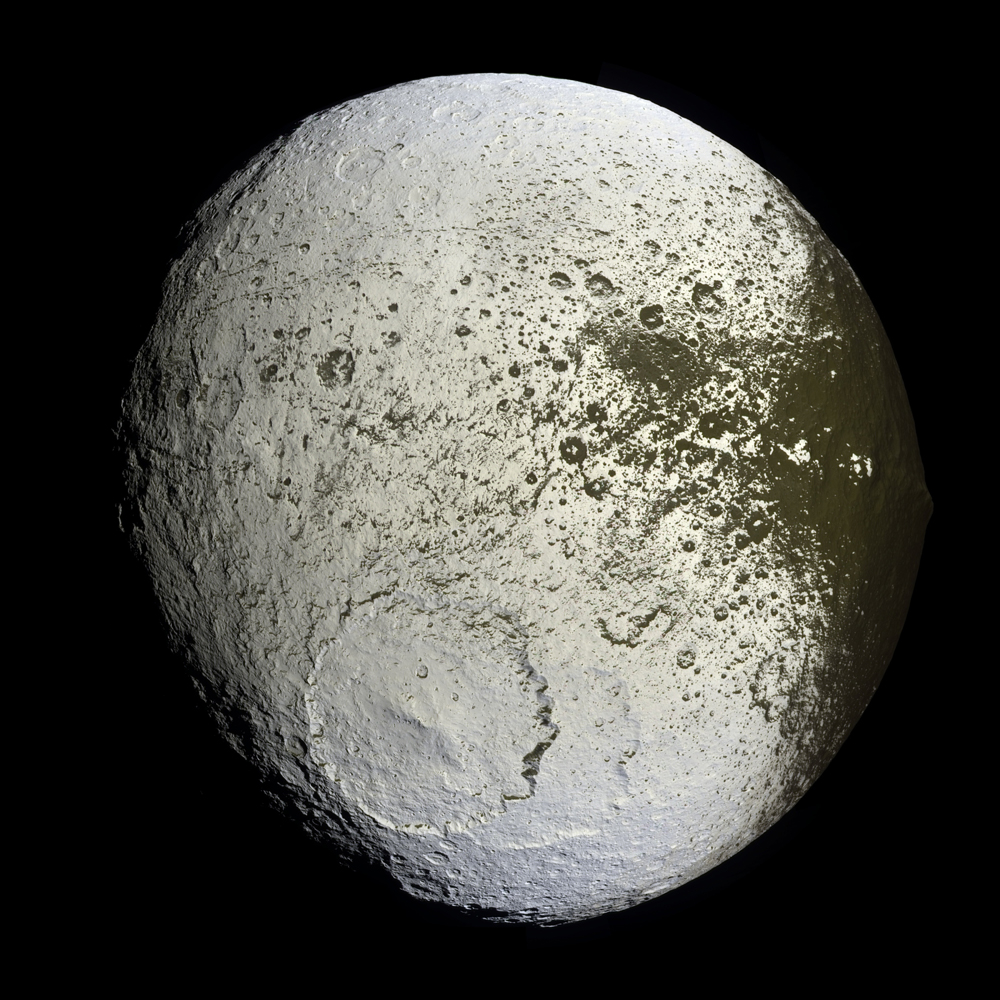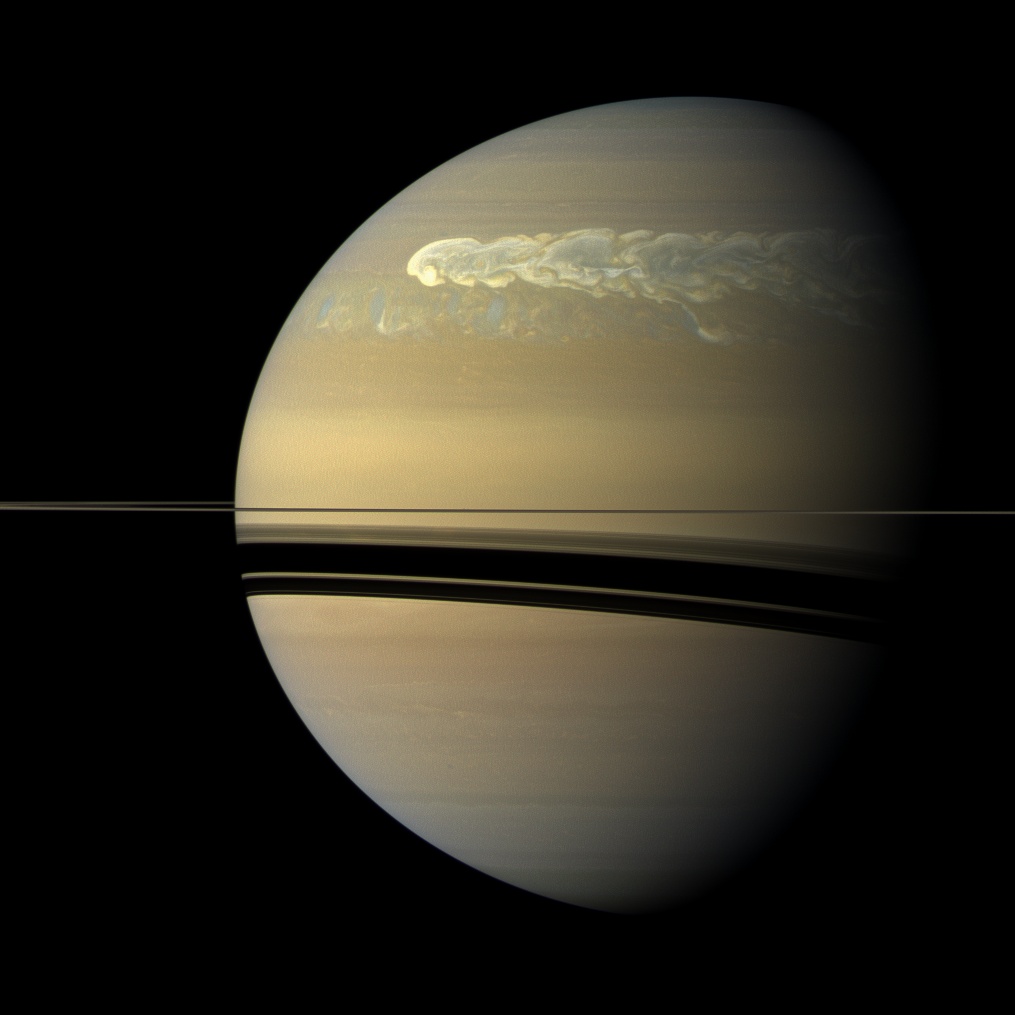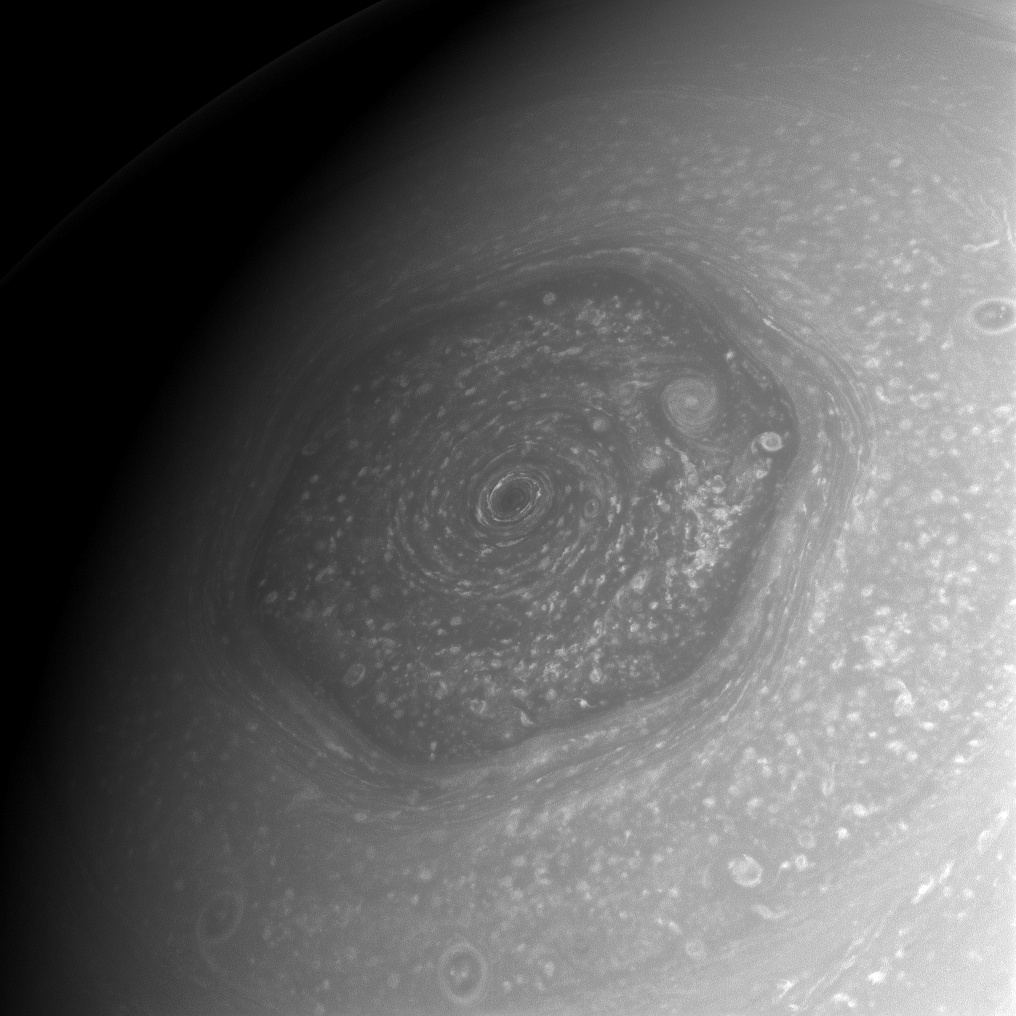Samhain Thanksgiving Moon
All these photographs taken by the Cassini Spacecraft. All either of Saturn or its moons and rings.
I posted this one before in a smaller shot. The title hanging below the lower right portion of Saturn’s rings says, earth-moon.
Enceladus Cassini one of the more active bodies in the solar system (moon of Saturn)
Hiding within Saturn’s rings are thousands maybe millions of tiny moonlets each no more than a kilometer across. Cassini discovered this shortly after arriving at Saturn
Hyperion.
This irregularly shaped moon looks like a honeycomb. It behaves weirdly too neither spinning at a constant rate nor maintaining a constant orientation
Iapetus
late 2010, a massive storm began churning in Saturn’s northern hemisphere. the storm stretched over 190,000 miles.
Saturn Cassini
Saturn’s north pole is home to an enigmatic hexagon
Though they measure nearly 200,000 miles across, the rings are incredibly thin. The main rings average only a few stories tall.
Tiny Mimas is the smallest spherical body in the solar system. Less than 250 miles across
Titan Titan is the only other body in the solar system with liquid on its surface. It has hydrocarbon lakes and seas, shores and rivers, and seasonal rainfall like on Earth

